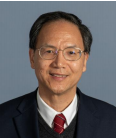题目: Myth and Pitfalls in Methodologies in Extracellular Vesicle Research
外泌体研究中的某些一目了然但却鲜为人知的实验误区和理论无知
讲座人: 段维
终身特级教授
澳大利亚Deakin大学
时间: 10月28日(周一)下午16:30-17:30
地点: 卢嘉锡楼202报告厅
报告人简介:

段维教授
澳大利亚墨尔本Deakin大学医学院癌症治疗学终身特级教授。研究兴趣包括适配体技术在肿瘤靶向给药、细胞外囊泡和液体活检中的应用。迄今为止共发表了论文200多篇,H指数为40,累计引用次数6400次。任澳大利亚国立健康与医学研究委员会、新加坡国立大学学术研究基金、卡塔尔(Qatar)国立研究基金、加拿大创新基金、法国国立生物医学研究基金等10项国际级项目的评审专家。在多家科学期刊的编辑委员会任职,其中于2015-2016年间担任Drug Design, Development and Therapy 的主编。2017年被科睿唯安(Clarivate Analytics)评为 SCI “全球高被引科学家 (药理学/毒理学)。
报告摘要:
In the past decade, studies of extracellular vesicles (EVs), the vesicles at a nano-size range released into extracellular space via fusion of multivesicular bodies with or direct budding from plasma membrane, have taken what was originally regarded as ‘platelet dust’ to the forefront of cell biology research as well as a future star of diagnostics and therapeutics. Owing to a variety of the cargos they can carry, EVs are thought to play pivotal roles in cell-cell and cell-tissue communications and the development of many devastating diseases. EVs are also powerful non-invasive diagnostic tools for early detection and monitoring of a specific disease in liquid biopsy. These naturally occurring bionanovesicles have been actively exploited as a novel delivery vehicle for therapeutics.
However, the unequivocal biomarkers for exosomes and microvesicles were only established in April 2019. The EV filed has been plagued with misleading terminologies, experimental artefacts, hastily assembled experimental methodologies, conclusions derived from experiments defying basic principle of cell biology and pharmacology as well as theories and assertions without any solid experimental evidence.
This talk aims at re-examining the EV research based on basic principles of biochemistry, cell biology, anatomy/histology and pharmacology. The typical errors in the published papers in the EV field, commonly used errant experimental approaches and certain prevailing notions without the support from both theoretical and experimental evidence will be discussed.
